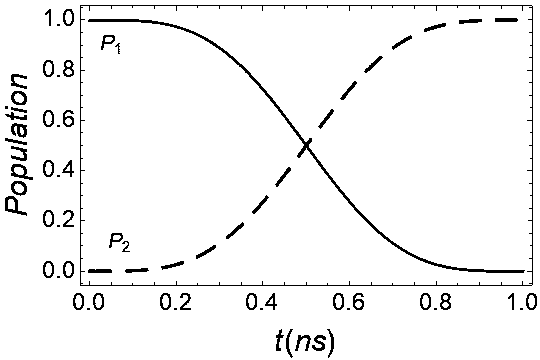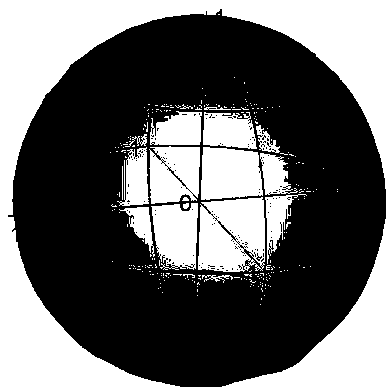Adiabatic shortcut method for high-fidelity population inversion in two-energy-level system
A population number and high-fidelity technology, applied in the field of quantum computing, can solve the problems of poor robustness and long evolution time, and achieve the effect of good robustness, short evolution time and high fidelity
- Summary
- Abstract
- Description
- Claims
- Application Information
AI Technical Summary
Problems solved by technology
Method used
Image
Examples
Embodiment 1
[0035] An adiabatic shortcut method for high-fidelity population inversion in two-level systems, according to the initial state of the system and final state polynomial Fit theta and beta:
[0036] θ(t)=a 0 +a 1 t+a 2 t 2 +a 3 t 3 ,
[0037] β(t)=b 0 +b 1 t+b 2 t 2 +b 3 t 3 ,
[0038] Where θ is in the range of [0, π], and β is in the range of [0, 2 π]. Adiabatic shortcut technology based on the Lewis-Riesenfeld quantum invariant theory is used to inversely solve the time-dependent Schrödinger equation of the two-level system to obtain the pulse signal. The obtained pulse signal is input to an arbitrary wave generator to generate pulses applied to the electrodes of the gallium arsenide / gallium aluminum arsenide heterogeneous crystal circle.
[0039] Such as figure 1 Shown are the images of pulsed signals Δ and Ω generated by this technical scheme. It can be seen from the image that the curve is smooth enough to be easily obtained in the experiment. The p...
Embodiment 2
[0044] This embodiment is basically the same as Embodiment 1, and the special feature is that in this embodiment, trigonometric functions are used to fit θ and β:
[0045]
[0046] β(t)=ArcCot(0.1t f θ'(t))
[0047] Generated pulse signal see Figure 4 , Figure 4 It can be seen that the curve is smooth enough to be easily obtained in experiments. The pulse action time is still 1ns.
[0048] Such as Figure 5 Shown is a graph of the population number evolution over time. From the evolution image of the population number, it can be seen that this method makes the population number of the two-level system change from the initial state evolved to the end state Successfully realized the inversion of the population number.
[0049] Such as Figure 6 Shown is the evolution trajectory of the system on the Bloch sphere. by comparison image 3 , we can find that by using different functions to fit θ and β, we get different system evolution trajectories that realize popula...
Embodiment 3
[0051] This embodiment is based on the first embodiment, considering the influence of two-level phase noise and decoherence. The main equation of the system is expressed in the form of Lindblad equation as:
[0052]
[0053] where γ is the decoherence rate, ρ and σ i are the density matrix and the Pauli matrix, respectively.
[0054] The pulse signal adopted in this embodiment is the same as that in Embodiment 1, see figure 1 .
[0055] Fidelity F=|f )>|. At the decoherence rate γ=7×10 6 the s -1 , the fidelity F=94.56%. For the evolution trajectory of the system on the Bloch sphere, see Figure 7 ,From Figure 7 We can see that the system still evolves from the north pole of the Bloch sphere to the south pole, that is, the inversion of the population number has been realized, but due to the influence of phase noise and decoherence, it has not completely evolved to the Bloch sphere The south pole of (0,0,-1).
[0056] Such as Figure 8 Shown is to generate the ta...
PUM
 Login to View More
Login to View More Abstract
Description
Claims
Application Information
 Login to View More
Login to View More - R&D
- Intellectual Property
- Life Sciences
- Materials
- Tech Scout
- Unparalleled Data Quality
- Higher Quality Content
- 60% Fewer Hallucinations
Browse by: Latest US Patents, China's latest patents, Technical Efficacy Thesaurus, Application Domain, Technology Topic, Popular Technical Reports.
© 2025 PatSnap. All rights reserved.Legal|Privacy policy|Modern Slavery Act Transparency Statement|Sitemap|About US| Contact US: help@patsnap.com



